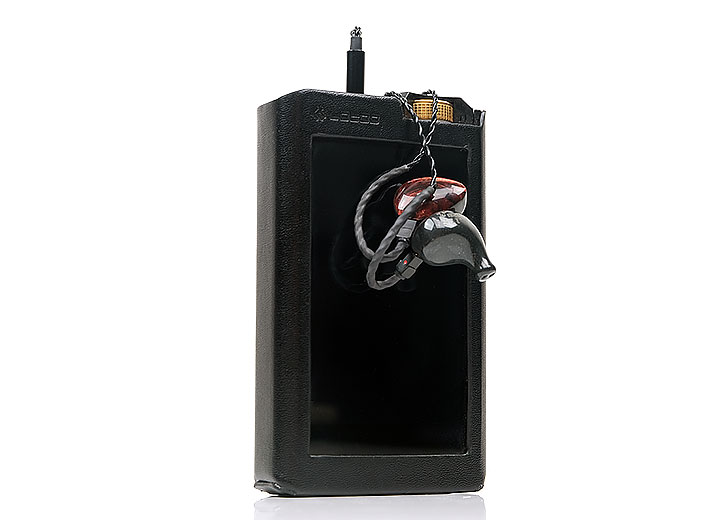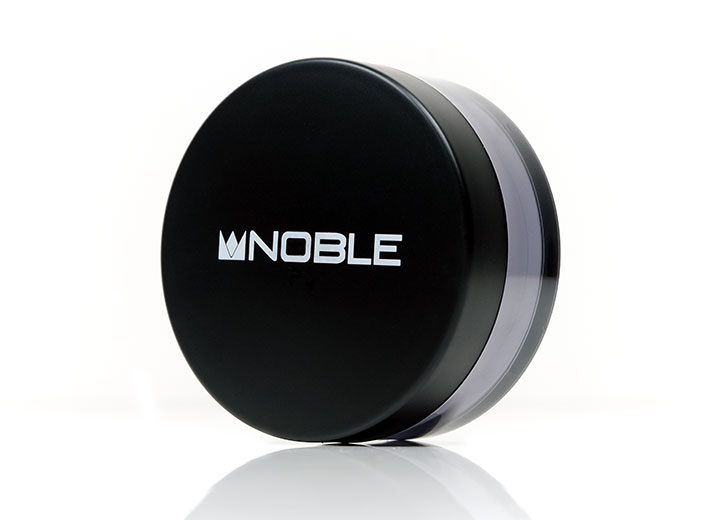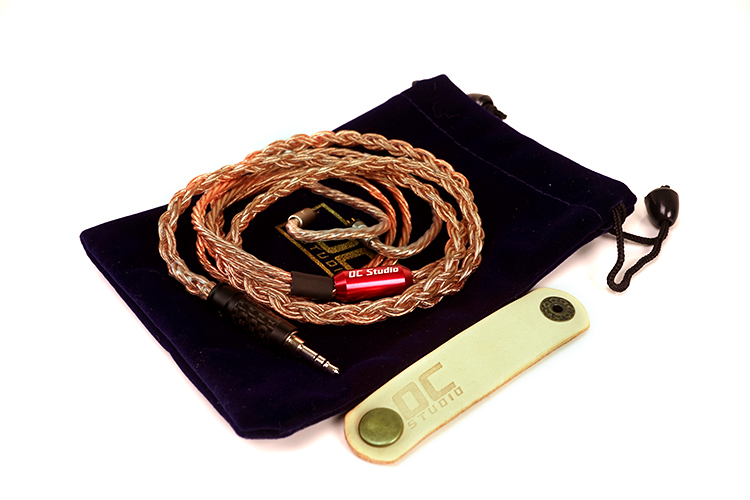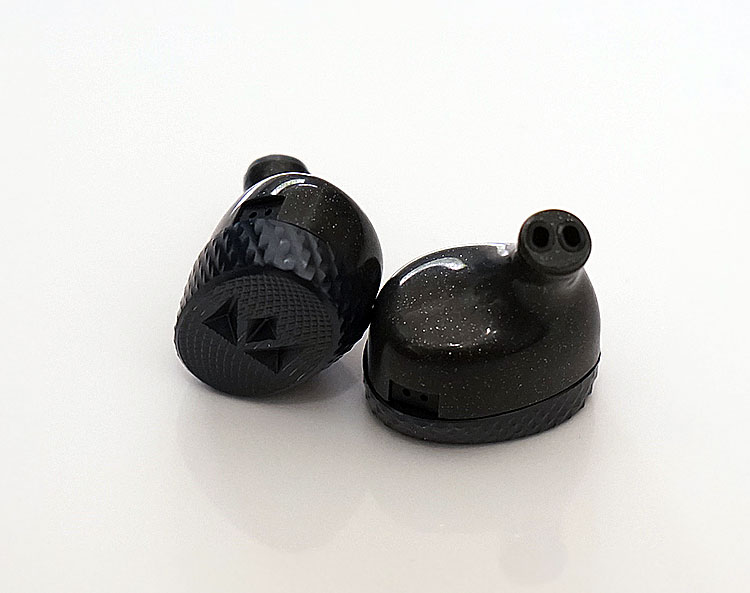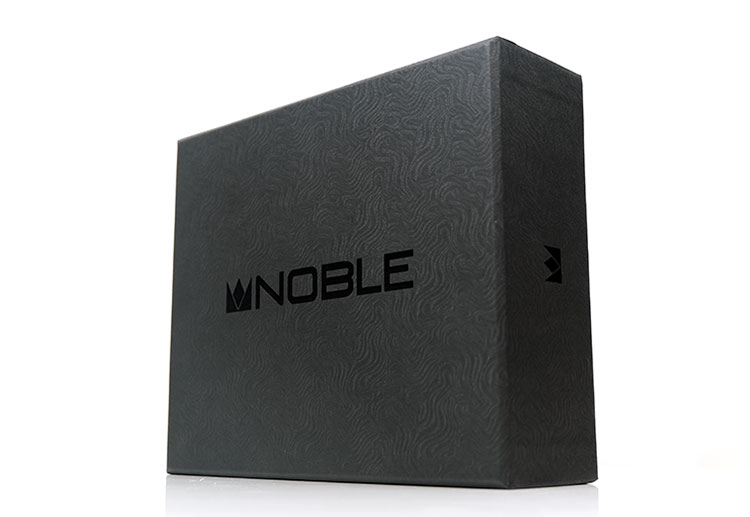Sound Impressions
Summary
With the right source or amp, the Savant II is a huge upgrade on the original Savant’s slightly hollow but forgiving sound and a mighty fine demonstration of just how meaty and fun a dual BA build can be when done right.
There have been a few monitors that instantly grabbed my attention at this price point with a performance I was not expecting. One of them was the Earsonics ES3 back in late 2016 and now the Savant II.
Do not get me wrong though, the technical side is still not flagship level or close to it. However, in terms of a bold, meaty confident U-shaped tuning this is Noble’s best iteration of a dual driver signature yet, by far. It will work incredibly well with everything modern, every beat-orientated outside of the most clinical and complex classical genres.
If you are familiar with the Massdrop collaborative with Noble Audio, the X, then the Savant II has more in common with that unique offering than the Sage, (the other dual driver in their Classic range).
In fact, the Savant II’s smoother, weighted, and thicker timbre is almost the complete opposite of Sage’s clean and neutral performance tuning making it very easy indeed to choose one or the other.
Bass
For me, this is the calling card of the Savant II’s signature. Not so much that it is a basshead monitor, it lacks that full-on dynamic driver natural levels of decay and outright power but it comes fairly close in terms of weight and power.
For me, both the sub-bass presence on the Savant II is excellent though not accentuated to the point where it is overpowering. I suspect the vented driver used by Noble is a subwoofer-class balanced armature given its slightly slower and “fleshier” sound compared to the pacy but leaner-sounding BAs used in the Sage.
if you are coming from the X, then the Savant II will be the fuller sounding of the two but also a bit more spacious and deeper sounding. The X actually has a bit more mid-bass punch with the Savant II is the slightly smoother but weightier of these two musical monitor bass performances.
Mids
There is a fairly linear to very slight elevation from the sub-to-mid bass to around 100-200mHz then a fairly gentle drop into the lower mids to around 700-800mHz.
Despite the dip, the Savant II bass fundamental on lower-pitched instrumental notes is addictive with plenty of power shining through. There is a touch of that low-end warmth creeping into the Savant II’s instrumental timbre so not only does it deliver excellent PRaT but it also has a smooth even-harmonic bias and a slightly rounded overtone.
More than that, there is plenty of depth and just enough headroom for the Savant II’s mids to breathe, especially on neutral sources with decent power. Throw in a Lotoo Paw Gold Touch or an iBasso DX220/AMPI MKII and you will pick up on just how black the Savant II background sounds on sparsely arranged tracks.
Vocals
Vocals are a little mixed for me on the Savant II and ultimately it depends on where they are pitching and the type of music you are listening to. For example, rock and anything that builds up a lot of midrange energy with male vocals just below 1k sound natural but ultimately not that forward. Sometimes they can struggle to leap out.
Female vocals or anything pitching higher than 1k sound gorgeous, however. I have a few tracks that I like to test for sibilance, one of them is Samantha James’s Tonight from her 2010 Subconscious album. There are actually two vocal tracks on this with Samantha to the fore and JB Eckl’s tenor soul vocal just floating in behind it.
On feistier cleaner monitors, Samantha’s whispery vocal mix can veer into sibilance. However, the Savant II gets the position interplay between the two singers spot on as well as delivering a wetter smoother vocal edge and excellent body. As a result, it sounds euphonic but just tight enough to prevent it from sounding overly lush.
Treble
Treble on the Savant II is slightly on the relaxed side with a slow roll-off beyond 6-7k though by no means lacking in air or headroom. Rather the tuning is very coherent to my ear with more of an emphasis on an upper-mids to lower-treble lift to ensure the harmonic balance is not too even-weighted and soft sounding.
As a result, you get a full-bodied and slightly wet treble tone with plenty of body. Upper-pitched percussion notes sound pleasant and natural despite their slight forwardness. Particularly, if that percussion straddles the upper mids, they don’t have too much in the way of energetic upper treble overtones to pull from so you get very little splashiness.
One note of caution is the source sensitivity which can sometimes dull down the delicate treble tuning Nobel has achieved with the Savant II. I would advise not pairing the Savant with a warm-sounding source or one with limited dynamic range. It can get a little veiled in the mids and darker up top as a result; something which kills it for me as an enjoyable listen.
Synergy
Efficiency & Noise
There are no official specs for the Savant II regarding impedance and sensitivity. Instead, you get a short line regarding the Savant II to be sensitive enough to be driven by moderate sources such as smartphones and some DAPs.
To a certain extent that is true for the Savant II but personally I like a little more dynamic range and resolution so a solid DAP with a focus on detail is going to make the Savant II sing just that bit better.
Noble IEM’s have always been around 20-30Ω though SPL has varied a little over the years with different driver choices such as the Khan. The Savant II’s pure BA build does perform to a very similar level to the older dual BA builds such as the Sage and the X and just mildly more efficient than the Savanna.
You will not hear much in the way of low-level hiss from moderate amplification high noise floors. It is not as sensitive as the likes of Campfire Audio Solaris, Andromeda or Empire Ears Phantom and does sound perfectly quiet on the R6 Pro, DX220, and the N6ii.
It sounds pitch black on the Lotoo PAW Gold Touch which just floored me in terms of audible excellence and dynamic range from the Savant II.
Source Synergy
The Savant II does seem to be very source sensitive, at least for my own preferences. I am not talking noise but more about timbre and the level of separation a DAP can offer.
For example, The Lotoo PAW Gold Touch and the iBasso DX220/AMP1 MKII are quite neutral with a strong emphasis on separation and dynamic range. With these 2 DAPs, I honestly thought the Savant II sounded absolutely magical with stock and aftermarket cables.
Just the right blend of timbral thickness and detail, very open and excellent separation for both vocal and instruments as well as a solid black background.
However, moving to a warmer DAP, one with something maybe a little linear as well such as the Cayin N6ii the pairing felt off. I didn’t get the same level of separation nor the openness I wanted from the Savant II mids.
It kind of sounded a bit “samey” like the dynamic range took a hit which is unusual as I do enjoy the N6ii a lot with other monitors.
My feeling is the already rich signature of the N6ii isn’t a great mix with the Savant II’s tendency to sound warm, to begin with. You definitely do not want a DAP that ups that warmth level which is why a neutral source with the Savant II is ideal.
Cable Synergy
I hesitate to recommend cable upgrades on a $499 monitor if you are new to the cable business because a decent upgrade might start around a quarter of the Savant II SRP and can go well beyond that. This is more for those who have some decent cables already and want to know what the best pairing is.
Two cables we tested that we can recommend with the Savant II without costing an arm and a leg are the BTG Audio Starlight and the OC Studio Orpheus MK5. Both of these cables are not hugely on the expensive side with the Starlight coming in at $125 and the Orpheus MK5 from $250 or less.
Note, I would pass on warmer smoother cables such as the Satin Audio Medusa or the Astra Acoustics Libra. These pairings were a bit too smooth for my preference. I wanted something to tease out a bit more of a treble overtone or ‘up’ the level of dynamic range.
BTG Audio Starlight
The Starlight is a 1.2m 19-strand 26AWG silver-plated OFC build and the Orpheus is an 8-wire TOTL pure copper cable. Both can come complete with 2-pin connectors to fit right into the Savant II without any stress issues.
The Starlight I recommend if you want to change up the treble emphasis and tone down the bass weight and warmth on the Savant II. The Starlight will tease out more of a neutral to a slightly forward treble presence and additional upper-mids focus as a result of that energetic treble performance.
As a result, the timbre or harmonic balance has a touch more clarity or bite than the stock cable performance and less warmth traveling up the FR. It makes for a fairly balanced, yet still very natural tone.
OC Studio Orpheus MK5
The Orpheus MK5 8-wire is all about enhanced dynamic range, an expansive soundstage and a little more treble clarity. It also has a beefier low-end, much more so than the Starlight and brings a lot more snap and power to the Savant II without losing any detail. This is my go-to for everyday use with the Savant II.
I love how it also opens up the midrange with neutral DAPS and does away with that softer compressed sound of the stock cable. You really start to pick up a lot more micro-detail in good recordings and if the music hits hard this pairing will not be found wanting.
Select Comparisons
Noble Audio Savanna
$499
Technical
The Savanna is a quad BA driver universal monitor from their current Classic range line-up, priced the same as the Savant II at $499.
They use similar speckled acrylic main body shells but are distinct from the wizard editions due to their standard aluminum faceplates which are a bit thicker and heavier. The rose gold feel of the aluminum top is striking but not as unique as the Savant II red “nebula” design.
Both have a similar fit and seal capability with a similar range of tips and I do tend to use both with foam or red stem single-bore silicone tips. The Savant II has a marginally more comfortable feel in the ear due to its smaller size and weight.
Since most Noble IEMs have no official specs we normally have to do a basic test comparing other IEMs to get a feel for how sensitive and easy they are to drive. Comparing them both directly I did not get a feeling the Savanna II was slightly more efficient but not harder to drive compared to the Savanna using the Cayin N6ii and the iBasso DX220.
Neither exhibits any serious differences for higher noise floors with both showing low to non-existent hiss levels on the N6ii, the older X7ii/AMP modules, and FiiO’s older X5iii.
Performance
You would be hard-pressed not to notice the differences between these two monitors immediately.
The Savanna’s quad driver tuning is much more linear with just the slightest uptick on the low-end for a little body and a very natural but slight top-end roll-off to create a smoother yet still very neutral sound signature. The Savant II is weightier, thicker sounding with a richer instrumental timbre and a more laid-back treble tuning.
For me, the Savanna BA’s covering the low-end sound like smaller individual drivers whereas the Savant II seems to be using a dedicated subwoofer BA for the low to mids.
You can really hear just how much more power the Savant II can deliver, even down to sub-bass presence. The Savanna’s linear and very neutral bass response is tighter, faster and maybe showing a little more separation but it doesn’t deliver as much oomph!
On the flip side, the Savanna has a cleaner more extended treble presence and a more neutral instrumental and vocal timbre. The Savant II rolls off just a touch more on the top end sounding the more relaxed of the two. Vocals on the Savant II sound marginally more recessed compared to the more neutral positioning of Savanna’s vocal presence.
That being said I prefer the wetter smoother timbre of the Savant II vocals, especially for male rock vocals than can pitch fairly high. Joe Elliot’s vocals for instance (80’s Joe where he still had it) sound perfect on slightly brighter mixes such as Hysteria with very little sibilance and plenty of body which is how I think he should sound.
Noble Audio Sage
$599
Technical
The Sage is not exactly Savanna 1.5 but it does draw inspiration from the dual BA driver build of the original Savanna. The actual unit we have here is the Wizard Edition rather than the standard green of the Classic range.
That means it is as light and diminutive as the Savant II build but sports a different faceplate design. Comfort, fit and seal between these are exactly the same with similar tip choices.
In terms of sensitivity and impedance again, no official specs but from our side-by-side testing on 3-4 DAPs, we found that neither really exhibited much in the way of sensitivity or driving differences. Again, like the Savana, my feeling was perhaps a marginal SPL increase for the Savant II by 1-2dB but too nuanced to be sure.
Any discrepancy is likely going to come from the effect of tonal preference and even then it is quite marginal. Sensitivity to noise on both is pretty much the same also with low noise floors on the FiiO amp cards though not completely invisible (Amp 3 card for example).
Performance
These two could not be further apart from each other in terms of timbre and overall FR bias. The Savant II is much more even harmonic biased with a thicker richer timbre and a heavier, slightly slower-sounding low-end response.
The Sage is much cleaner, more of a typical smaller BA style tuning with more emphasis on the upper mids and treble presence. It has less depth but does sound the airier and taller of the two.
The Sage timbre has more odd-harmonic overtones, exchanging low-end power and warmth for a tighter more neutral bass signature. The Savant II delivers the weight and PRaT for me but will sound the slightly darker of the two with a more laid-back treble presence and a slightly softer attack.
There is less sparkle but certainly, the Savant II will come across as the more forgiving of the two for a wide range of genres.
The Sage excels more in individual note articulation with a speedy, detailed, and forward sounding mid to upper midrange. The Savant II switches it downwards with more lower-mids power and presence. Guitar work might not sound as pristine but punch with far more authority.
Bassheads will want the Savant II over the Sage, and modern pop and rock lovers also though indie guitar, acoustic and classical lovers will find a home with the Sage’s more pristine delivery.
Massdrop X Noble X
$249
Technical
The Massdrop X Noble X was a special Massdrop Edition and is not available an official Classic range product line. At the time of the drop, it sold for $249 which is a bargain for its performance.
To all extents and purposes, it does look like a Classic range monitor with its speckled acrylic shell body and machined aluminum blue’ ish flat top faceplate.
As such its main body is the same size as the Savant II, however, the deeper aluminum faceplate adds some girth to the overall dimension compared to the more svelte Savant II Wizard variant. That slimline unique design of the Savant II nebula design is more eye-catching and slimmer.
Comfort and fit are on par with each other though visually the X sits out of the ear a bit more and may feel the slightly heavier of the two in the ear due to the additional grams of the aluminum faceplate.
Tip choice is similar though you get slightly less in terms of size fitting choices. Still, the red stem and foam tips work just fine for me with the X, same as the Savant II.
Specs
In terms of impedance and SPL, we do know the X is listed at 30Ω and my guess the Savant II is not that far off either in terms of SPL with almost no difference in sound matching on our test DAP, the Sony 1Z (single-ended, low gain, 70-75 steps).
Across all DAPs tested (Sony 1Z, Cayin N6ii, iBasso DX220/AMP 1 MKII), noise levels were well within acceptable limits to the point of being non-existent and none required a high gain mode to be properly driven. It will also play out just fine on efficient amps such as the ALO Audio RX (MK2) and Chord’s Mojo without giving rise to unacceptable high noise or background hiss.
Performance
The Noble X is like the junior sibling to the Savant II. Both are going for the same musical, weighty and smooth sound signature. However, there are some differences but they tend to be more obvious in the technical domain rather than just the overall timbre which I find relatively similar.
The first is the depth and power of the low-end driver. The Savant II reaches a little deeper than the X and shades it for sub-bass presence and power. The X might be the punchier of the two for mid-bass presence.
The Savant II does sound marginally slower than the X but the gap is nothing like the Savanna or Sage whose clean, linear delivery presents a stark contrast. Both the X and Savant II are colored and deliver excellent body, just the Savant II takes that to the next level.
Second, the vocals are also a little further forward on the Savant II and also sound a bit more detailed or vivid sounding. You tend to notice that a bit more when the low-end starts to get a bit busy on the X, vocals seem to sit further back and sound slightly veiled in comparison to the Savant II.
There does seem to be a better level of separation and spaciousness with the Savant II mids compared to the X. I also find the imaging to be a little more holographic in placement than the X, with better front-to-back positioning for lead and backing vocals.
Treble also seems more refined and articulate on the Savant II despite the slightly relaxed nature of both monitors’ top-end tuning.
Our Verdict
It is so hard to believe what companies like Noble and Hum are doing these days with dual-driver builds. The performance the Wizard is able to extract out of the Savant II puts a lot of multi-driver monitors to shame.
This is at once musical, smooth, and euphonic in tone but with the right source pairing, it also has good detail and excellent separation. All qualities that keep the Savant II from erring into a muddiness death spiral with too much bass or going all-out with V-shaped ‘party tricks’.
I will say that the stock cable is fine but the enhanced dynamic range and clarity of an 8-wire does make a big difference to my own personal enjoyment of the Savant II. Pair this combo with a neutral DAP and I could listen to the Savant II with EDM, R’n’B, or some quality modern soul pretty much all night without a hint of fatigue.
When you think about it, isn’t that what enjoying your music is all about?
Noble Audio Savant II Wizard Specifications
- Unique one-off design.
- Sensitive enough for use with smartphones as well as portable amps and DAPs
- Hand-assembled, matched and finished with FDA-approved hypoallergenic lacquer
- Detachable cable with industry standard two-pin configuration (0.78 mm diameter)


